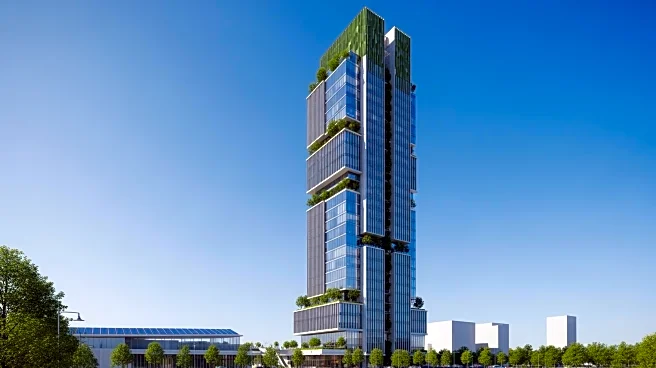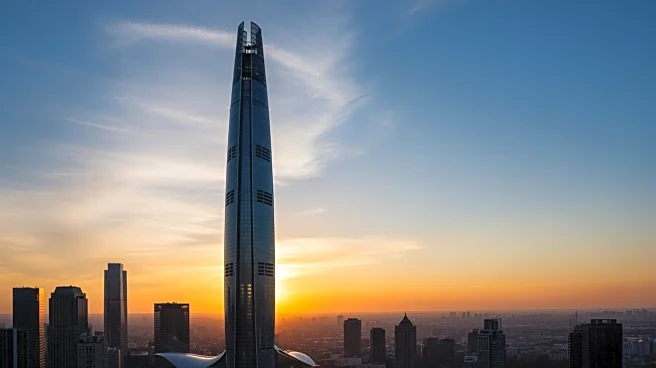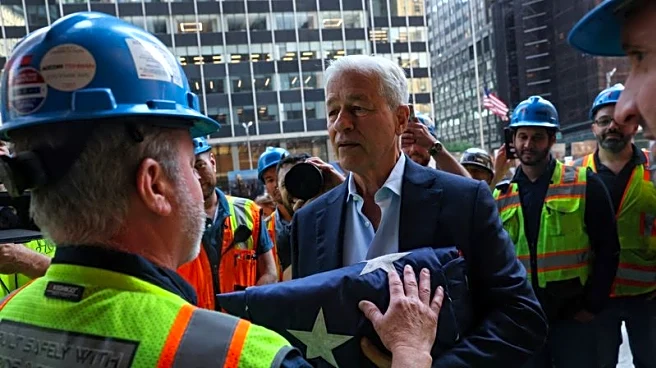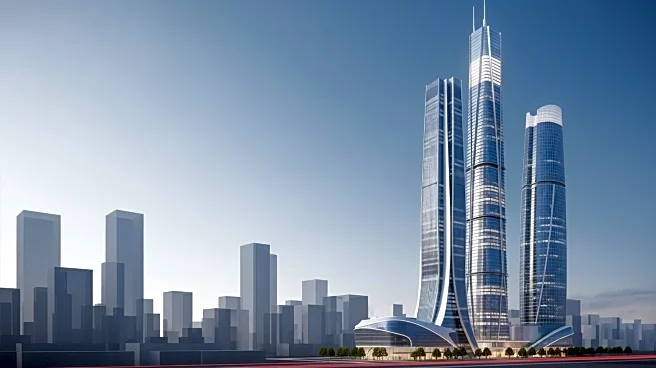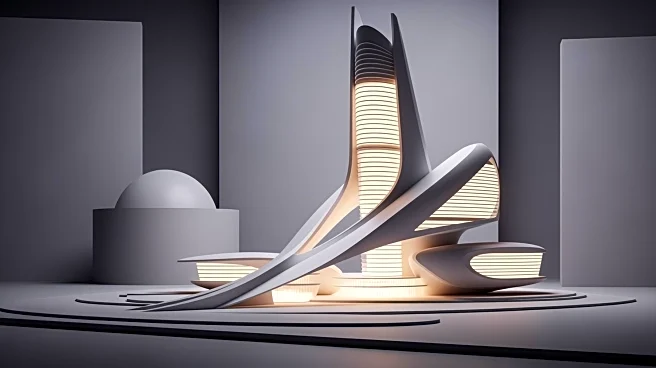What's Happening?
JPMorgan Chase has inaugurated its new global headquarters at 270 Park Avenue in New York City. The 60-story skyscraper, designed by Foster + Partners, stands as the tallest all-electric building in the city.
The $3 billion project accommodates 10,000 employees across 2.5 million square feet of workspace. The building is powered entirely by renewable energy sourced from an upstate New York hydroelectric plant. It incorporates advanced sustainability features such as a water storage system, triple-pane glazing, and smart technologies that adjust to the building's energy needs. The design aims to achieve LEED Platinum V4 certification and WELL Health-Safety Rating, enhancing energy efficiency and natural light intake. The construction involved recycling 97% of materials from the previous structure, surpassing the LEED benchmark of 75%.
Why It's Important?
The opening of JPMorgan Chase's new headquarters marks a significant investment in New York City and underscores the company's commitment to sustainability and employee well-being. By utilizing renewable energy and incorporating advanced environmental features, the building sets a new standard for eco-friendly urban architecture. This development is likely to influence future construction projects in the city, encouraging more companies to adopt sustainable practices. The headquarters also contributes to the East Midtown Rezoning initiative, aimed at modernizing office spaces in the area. The project reflects a broader trend towards environmentally conscious corporate infrastructure, potentially impacting public policy and urban planning strategies.
What's Next?
The new headquarters is expected to serve as a model for future office buildings, promoting sustainability and employee wellness. As companies increasingly prioritize eco-friendly practices, similar developments may emerge, further transforming New York City's skyline. JPMorgan Chase's investment in public space improvements through air rights acquisition could lead to enhanced urban environments in Midtown. The building's design and features may inspire other corporations to integrate advanced sustainability measures, potentially influencing regulatory standards and industry norms. The success of this project could also encourage further rezoning efforts to accommodate modern office spaces in other parts of the city.
Beyond the Headlines
The demolition of the Union Carbide Building, which previously occupied the site, sparked controversy among preservationists due to its historical significance and the involvement of female architect Natalie de Blois. This highlights ongoing debates about balancing historical preservation with modern development needs. The new headquarters' focus on wellness and cognitive function, supported by Harvard research, reflects a growing emphasis on creating healthier work environments. The integration of art and communal spaces within the building underscores a cultural shift towards more holistic and inclusive corporate settings.
